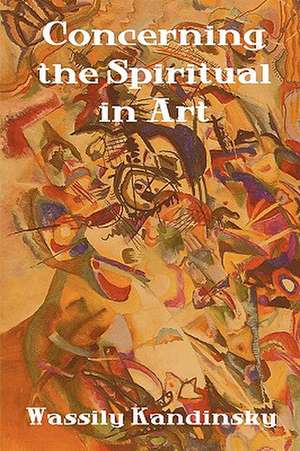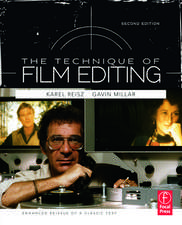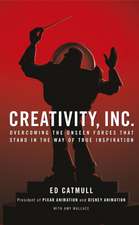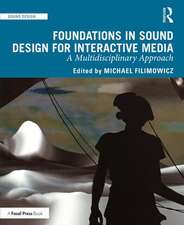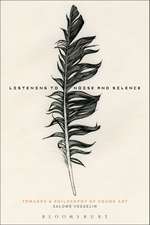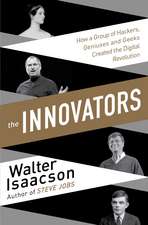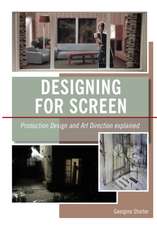Concerning the Spiritual in Art
Autor Wassily Kandinskyen Limba Engleză Paperback – 31 mai 2011
| Toate formatele și edițiile | Preț | Express |
|---|---|---|
| Paperback (13) | 40.05 lei 3-5 săpt. | |
| CreateSpace Independent Publishing Platform – | 40.05 lei 3-5 săpt. | |
| Dover Publications – 31 mai 1977 | 44.38 lei 3-4 săpt. | |
| EMPIRE BOOKS – 30 noi 2011 | 52.10 lei 3-5 săpt. | |
| CREATESPACE – 31 aug 2009 | 52.92 lei 3-5 săpt. | |
| CREATESPACE – | 57.62 lei 3-5 săpt. | |
| Penguin Books – 29 iun 2022 | 57.78 lei 23-34 zile | +19.83 lei 7-13 zile |
| Neeland Media – 13 iun 2019 | 51.58 lei 6-8 săpt. | |
| Connecting to God – 31 dec 2009 | 52.11 lei 6-8 săpt. | |
| Echo Library – 30 noi 2008 | 60.27 lei 38-44 zile | |
| Bibliotech Press – 2 aug 2019 | 82.91 lei 6-8 săpt. | |
| Bibliotech Press – 19 ian 2012 | 83.02 lei 6-8 săpt. | |
| Indoeuropeanpublishing.com – 31 mai 2011 | 83.12 lei 6-8 săpt. | |
| Book Jungle – 3 iul 2008 | 88.87 lei 6-8 săpt. | |
| Hardback (4) | 66.56 lei 3-4 săpt. | |
| Dover Publications – 23 iun 2021 | 66.56 lei 3-4 săpt. | |
| – | 123.69 lei 6-8 săpt. | |
| Binker North – mar 1912 | 141.94 lei 6-8 săpt. | |
| Echo Point Books & Media – 6 noi 2020 | 158.28 lei 6-8 săpt. |
Preț: 83.12 lei
Nou
15.91€ • 16.64$ • 13.21£
Carte tipărită la comandă
Livrare economică 02-16 aprilie
Specificații
ISBN-10: 1604442700
Pagini: 94
Dimensiuni: 152 x 229 x 6 mm
Greutate: 0.15 kg
Editura: Indoeuropeanpublishing.com
Notă biografică
Textul de pe ultima copertă
A pioneering work in the movement to free art from its traditional bonds to material reality, this book is one of the most important documents in the history of modern art. Written by the famous nonobjective painter Wassily Kandinsky (1866-1944), it explains Kandinsky's own theory of painting and crystallizes the ideas that were influencing many other modern artists of the period. Along with his own groundbreaking paintings, this book had a tremendous impact on the development of modern art.
Kandinsky's ideas are presented in two parts. The first part, called "About General Aesthetic," issues a call for a spiritual revolution in painting that will let artists express their own inner lives in abstract, non-material terms. Just as musicians do not depend upon the material world for their music, so artists should not have to depend upon the material world for their art. In the second part, "About Painting," Kandinsky discusses the psychology of colors, the language of form and color, and the responsibilities of the artist. An Introduction by the translator, Michael T. H. Sadler, offers additional explanation of Kandinsky's art and theories, while a new Preface by Richard Stratton discusses Kandinsky's career as a whole and the impact of the book. Making the book even more valuable are nine woodcuts by Kandinsky himself that appear at the chapter headings.
This English translation of Uber das Geistige in der Kunst was a significant contribution to the understanding of nonobjectivism in art. It continues to be a stimulating and necessary reading experience for every artist, art student, and art patron concerned with the direction of 20th-century painting.
Cuprins
Descriere
Artists and thinkers alike will treasure this special hardcover edition of one of the most important documents in the history of modern art. A pioneering work in spiritual revolution and the movement to free art from its traditional bonds to material reality, and written by the famous nonobjective painter Wassily Kandinsky (1866-1944), it helps readers understand art by explaining Kandinsky's own theory of painting and crystallizes the ideas that were influencing many other modern artists of the period. Along with his own groundbreaking abstract paintings, this book had a tremendous impact on the development of modern art.
